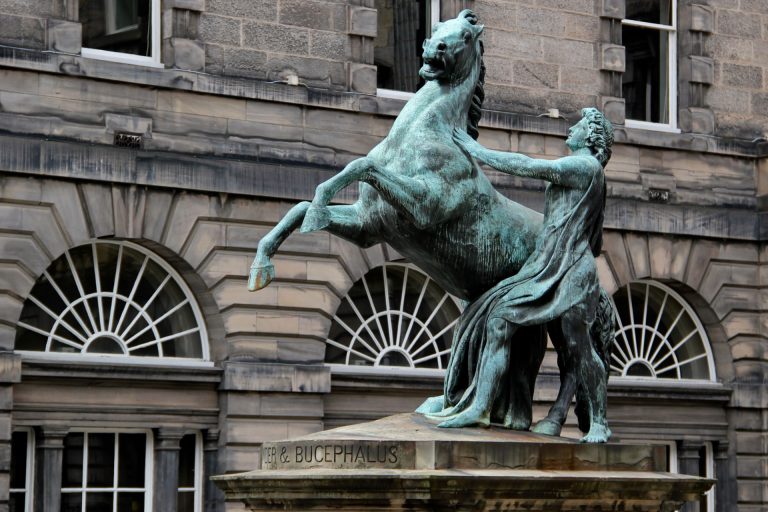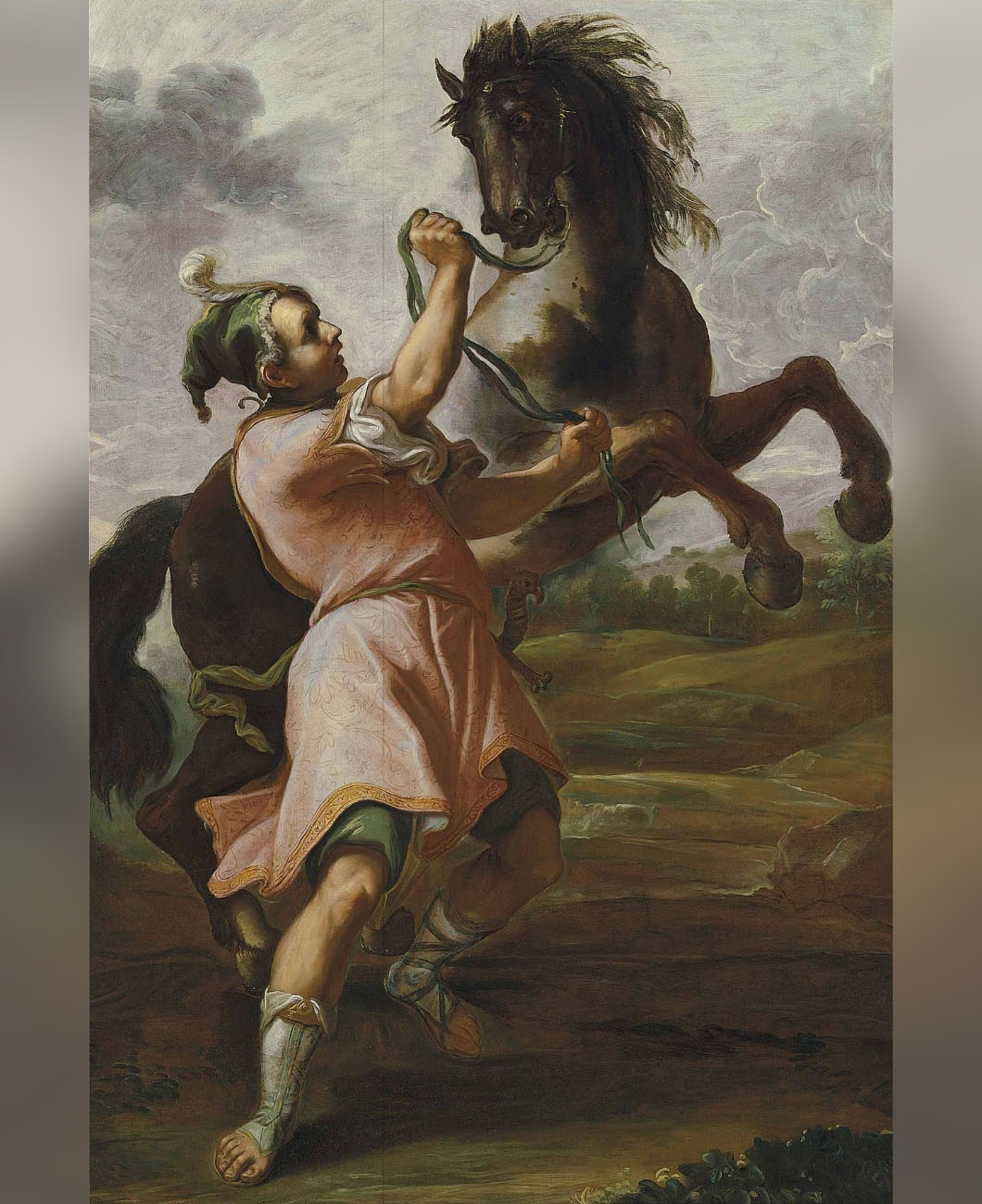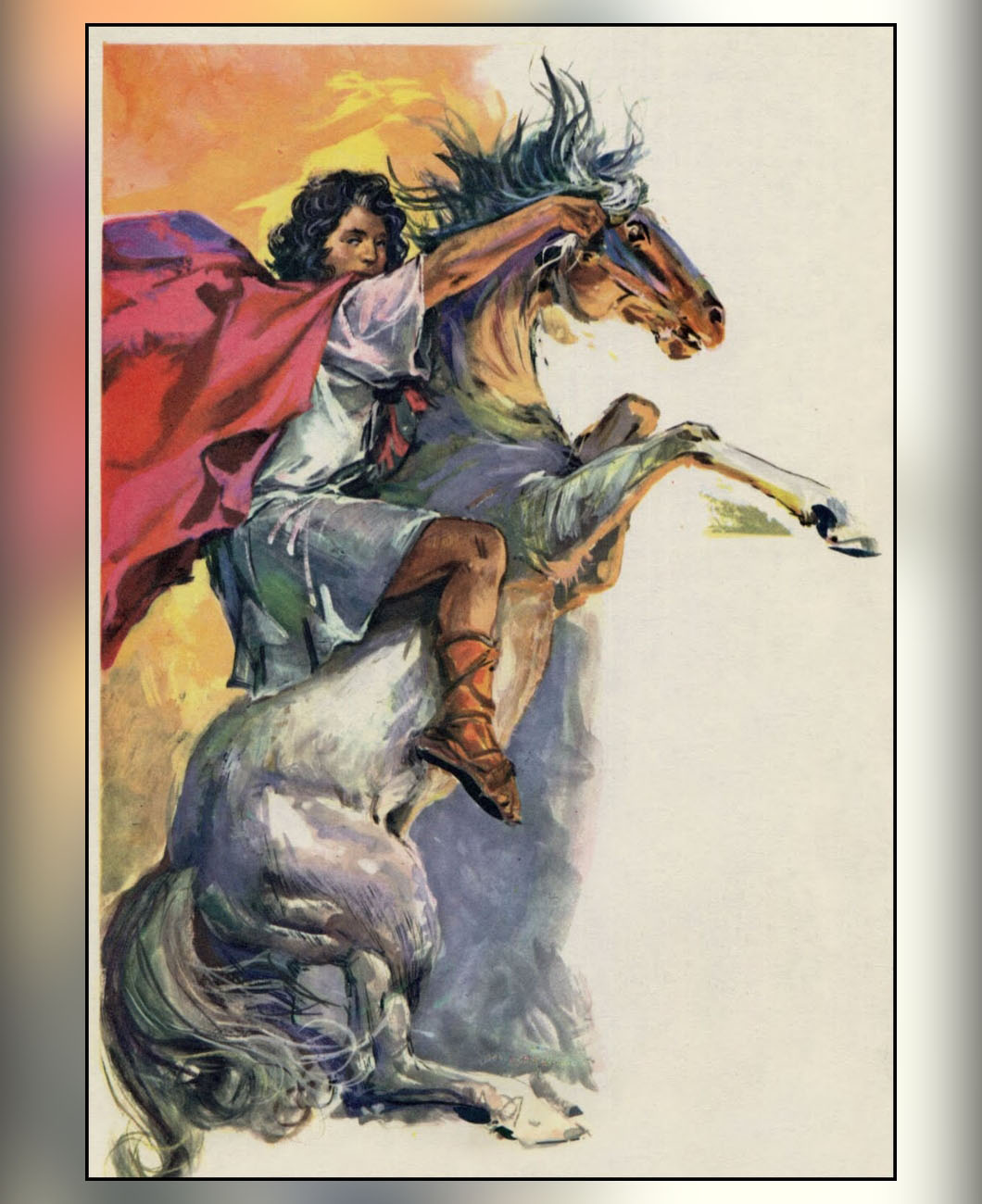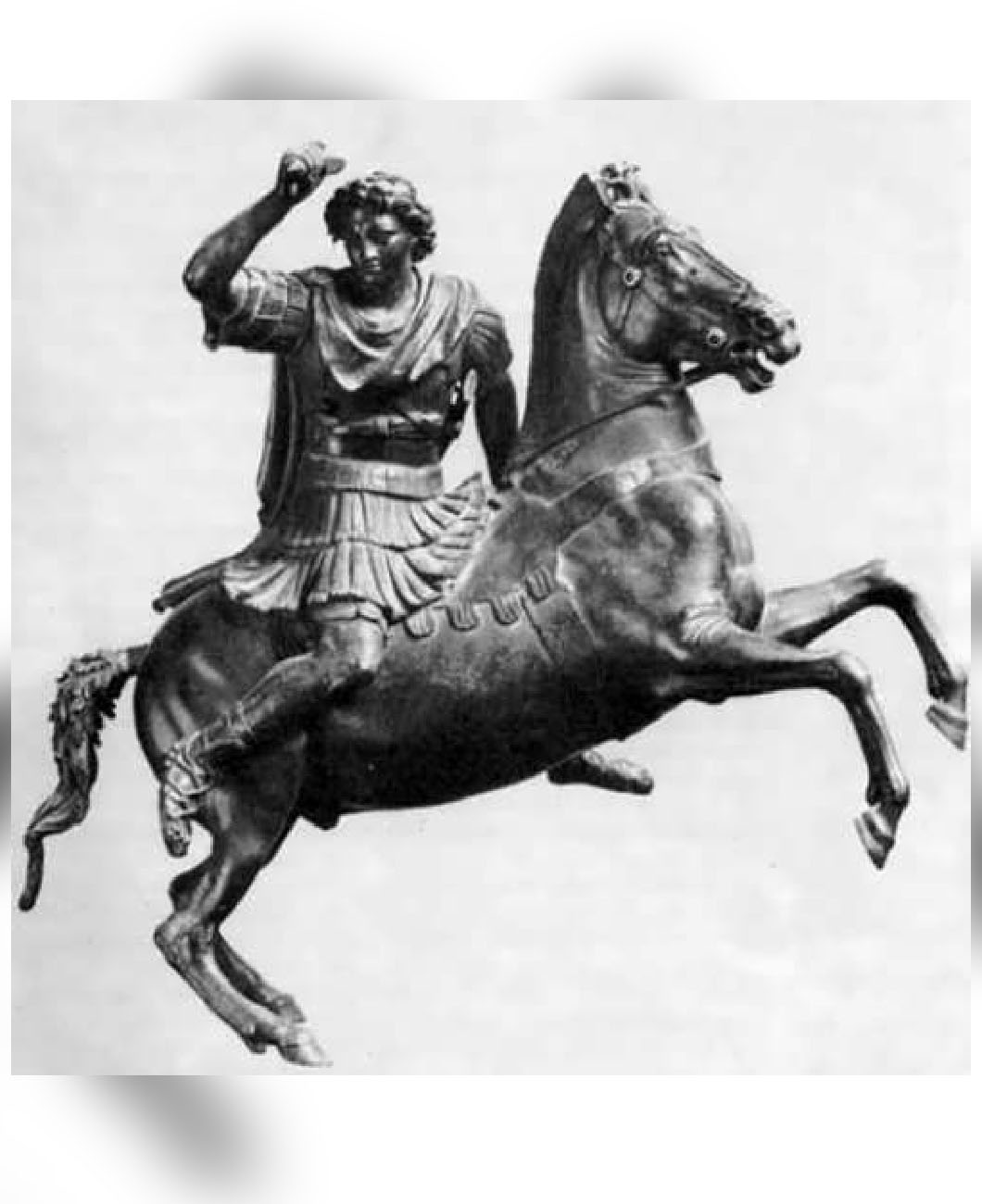
Alexander along with his legendary horse Bucephalus
Alphacoders
Equestrian | Highlight, Highlight
Alexander the Nice, and his beloved horse Bucephalus, shared a outstanding bond, ranging from the primary time the chief tamed it.
“What a superb horse do they lose, for need of handle and boldness to handle him!”
— Alexander the Nice, 356-323 BC, King of Macedon
(Seeing Bucephalus being led away as ineffective)

Wikimedia
Alexander the Nice was the king of Macedon from 336 till his passing in 323 BCE. He acquired the realm from his
father, Philip II of Macedon. His profitable army crusades prolonged the Greek world all the best way to north-western
India.
Bucephalus was purchased by King Phillip in 346 BCE at a hovering worth. The gorgeous black horse stood taller than the
odd Macedonian steed and was wild and savage. No man may management him. The king bade his servants take him
away.
“It’s a pity to damage so nice a horse as that,” stated Alexander, the king’s younger son, 12 years’ outdated. “These males do
not
know how you can deal with him.”
“Maybe you are able to do higher than they?” requested his father.
“I do know,” stated Alexander, “that in the event you would solely give me depart to attempt, I may handle this horse higher than anybody
else.”
“And in the event you fail to take action?” requested Philip.
“I’ll pay you the value of the horse,” stated the curious lad.
Whereas everybody was snickering, Alexander approached Bucephalus, and turned his head towards the solar. He had seen that
the
pony feared his personal shadow. He at that time talked delicately to the horse, and tapped him along with his hand. When he
had
calmed him a bit, he made a speedy spring, and jumped upon the horse’s again.
Everybody anticipated to see the child fail. Be that as it might, he saved his place, and let the horse run as quick as he
would.
Finally, when Bucephalus was worn out, Alexander obtained management of him, and rode again to the place his father was
standing.
All males current appreciated the scene, after they noticed that the boy had demonstrated himself to be the grasp of the
beautiful horse.
He jumped to the bottom, and his father ran and kissed him: “O my son, look thee out a kingdom equal to and worthy
of
thyself, for Macedonia is just too little for thee.”
Subduing of the wild Bucephalus was a defining second within the younger Prince’s life, exhibiting the knowledge and
assurance
he was to point out in his conquest of Asia. From that time onward, Alexander and Bucephalus had been the most effective of
companions.
They had been indefatigable; nobody however Alexander may experience him, and certainly he did, on every combat, from the victory of
the
Greek city-states and Thebes by means of the Battle of Gaugamela and into India.
After the annihilation of Darius III, Bucephalus was captured whereas Alexander was away on tour. On studying of
the
mugging, Alexander vowed to fell every tree, lay the extensive open to waste, and butcher every occupant within the space, as a
consequence of which the horse was returned alongside a request for benevolence.

Centaurican
Indian Sojourn
Alexander tried to come back to the “finishes of the world and the Nice Outer Sea” and attacked India in 326 BC.
Alexander’s demise prompted the formation of latest empires, not simply the Hellenistic Greek realms of the
Mediterranean,
however even the Mauryan Empire in India (321-185 BCE) headed by Chandragupta Maurya.
Previous data specific that Bucephalus handed on after the Battle of the Hydaspes in 326 BC, in what’s at the moment
present-day Punjab Province of Pakistan, and is buried in Jalalpur Sharif outdoors Jhelum, Punjab, Pakistan.
One other report expresses that Bucephalus is buried in Phalia, a city in Pakistan’s Mandi Bahauddin District in
Punjab
Province, which is called after him (Alexandria Bucephalous).
Based on a story, when it was injured within the assault upon Thebes, it might not allow Alexander to mount any
different
pony. He saved his life many occasions and served him until his final breath!
When it died, his grasp Alexander the Nice appropriately carried out its obsequies, and constructed round its tomb a
metropolis,
which he named after it, Alexandria Bucephalous. Established in Might 326 BC, the city was located on the Hydaspes
(Jhelum River), east of the Indus River. The battalion was settled with Greek and Iranian veterans and Pauravas
native
individuals. It had monumental dockyards, being the centre of commerce and change.

Wanderlord
Bucephalus might be the horse depicted within the “Alexander Mosaic”, uncovered on the Roman web site of Pompeii within the
Home
of the Faun, primarily based on a 4th century BCE wall portray.
Charles Le Brun (1619-1690) work of Alexandrine topics, together with Bucephalus, survive immediately within the Louvre.
One in
explicit, The Passage of the Granicus, depicts the warhorse battling the difficulties of steep muddy river banks,
biting and kicking his foes.